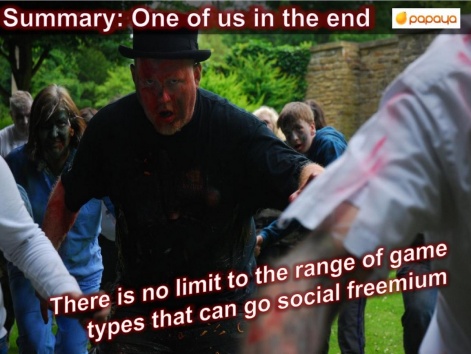If you want to survive in the long term, it's no good shooting off virtual goods randomly. You need to look at the weapons in your armoury. Consumable goods, like the classic one-use 'energy crystal' allow us to reduce the cost of the initial purchase and give reasons to buy time and again.
But there's a problem with consumables. The very things that make them work to reduce the short term risk for a player are the reasons they eventually become barriers to engagement.
Players have to continue to buy them to get through the game, and there is never anything to show for those purchases except in-game progress.
This is where durable goods come in. These are items that don't run out and help players feel they are maximising their investment in the game. For example, what if we have a 'Well of Energy Crystals' that gives you 20 energy crystals each day?
To maximise the value a player gets from this virtual good they have to come back into the game every day and use all those crystals in the game.
And perhaps they'll spend another 10c on an energy crystal to do just one more thing.
Lesson 8: Use ammo sparingly
Every purchase we make is followed by a sense of remorse, where we realise the reality of the good (virtual or otherwise) can never quite match the expectations we had before.
Therefore we can't afford for players to start spending before their commitment is strong enough to survive this shock. We need to make sure players to have a great first purchase experience and give them positive reasons repeat that purchase time and again.
Their first purchase has to be easy, compelling, and extremely rewarding.

If you get the game right, your players will keep coming back and want to be able to continue to play over many months. Success is not a trivial problem.
You need to ensure that players have enough to do and enough content to purchase. You need the ability to ensure that you can scale, and while that's a lot easier to do now in the age of cloud computing, it still requires competent technical design.
You have to manage the game as a service with regular probably weekly content updates. The more you engage the community for your game, the more they'll support and recommend your game.
Lesson 10: Complacency kills
Even if your game is doing well, complacency is suicide. Players crave new content and you need to constantly give them reasons to return to the game.
We can provide some of this through the mechanics of the game: creating appointments, allowing meaningful social interaction to happen when you are not online, etc. But we also need to make sure we have an ongoing pipeline of content and product extensions.
If you can schedule peoples expectation of when new content will arrive, this can provide a call to action for players to return who might otherwise churn.
Lesson 11: Count your bullets
If you want to survive this apocalypse you will have to understand your data.
We now have so much more information about whats happening when people play our games, and it's data from live subjects in the real-world.
However, we have to understand the limits of that data and what it can mean. We need the good design instincts and creativity of experienced designers working alongside trained data analysts.
Lesson 12: All this shall pass
Nothing lasts forever, and your playerbase is no exception. We have to accept this and work with it.
42 percent of players who spend money in games like X City spend money in more than one game. 7 percent spend money in more than five games. We have to understand what stage the player is at and respond accordingly.
If we can take them with us to new content, we can reinforce their appreciation of our brand in our next game
Lesson 13: 8-12 days to turn
One of the most interesting behaviours we have seen with freemium is the spending habits of the 'Whale' or 'TrueFan' users the players that spend more than $100 per month.
On Papaya's platform, we see these users take between 8-12 days before they start spending any money. They also start spend money often on goods which allow them to show off either in terms of progression in the game or customisation.
However, the majority of their spending goes on 'accelerators'. These are virtual goods that allow them to get the most out of playing a game they enjoy, and in which they invest considerable time.
Why shouldn't they also spend money for that enjoyable content?

The freemium model has a disruptive power which we have to learn to understand and respond to.
It will be an amazing force for quality of experience and increased accessibility to game play experiences. However, it will also change forever the way we look at game design and the way we look as games as services.
Those people who survive will be the ones who embrace this. You'll be one of us in the end.
For more on PapayaMobile, you can visit the firm's website or follow Oscar on Twitter.





















